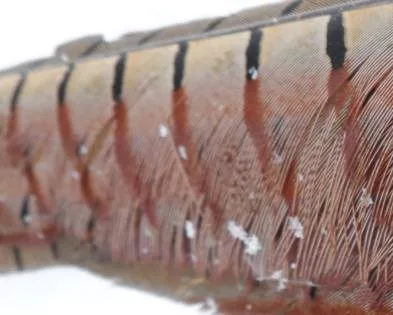
By Nick Simonson; Late season hunts are always a favorite, and whether your upland season just closed, the waning days are upon you, or perhaps you’re looking southward for one last long weekend of hunting somewhere the opportunity remains open for a few more weeks, the time spent afield at pheasant hunting’s end is some of the best and most memorable of the year.
Usually clad in the white trim of snow, late upland outings provide either groups of pheasants that flush well out of range, or those one or two roosters that sneakily try to hold until you pass by, taking to the air once your back is to them and you’re ten yards past them. The flush is always a startling late Christmas present, and the shot is often a hurried pivot and fire. Make it or miss it, that moment is always memorable with its surge of adrenaline and the heightened heart rate it produces, and the former experience, of seeing field and slough edges erupt with a bunch of birds even though they’re well out of range, provides hope for the next year that the stock is in place for a good spring nesting season.
This year’s late season differed from most with the warmer than average conditions, and in the areas I hunted, a whole lot of ice from a recent system that brought a wintry mix which made holiday travel unpleasant for a while. The warming of the chosen day afield gave a strange feeling of March as puddles accumulated in the two-wheel tracks of old field roads, and the slippery surface of iced-over snowbanks make some of the walk challenging. All around me, however, the sound of falling ice, from reed grass, cattail stalks, and overhanging branches of trees set me on constant high alert. After my dog would rumble through, the sound of the ice breaking loose and rattling through the dry vegetation sounded remarkably like the first few steps of a fleeing pheasant, or the way the heavy blades crackled imitated the first few wing beats of a bird breaking cover. It got to be a bit of shell shock, as I numbed to the constant crackling just in time to have a rooster take off from a nearby frozen hidey-hole and not be ready for it in the least.
Thankfully, the flushing flocks were there, having escaped their iced-in cover in the shelter belts and scattered pocket sloughs, apparently weathering the storm without much mortality. The pheasants soaked the sun in the grassy areas which had already lost much of their frosting, and the dogs gave wild, switch backing chase to the scent lines the bird produced as they moved toward the windward side of the light cover and flushed from us at a distance. On one occasion, my lab locked up at the edge of a small grassy pocket and held his point for thirty seconds as my brother closed in and converted a going-away shot on the rooster that popped out. He’d pick a second off the ice-trimmed edge of a small slough, and it would be the final bird of the day. It was a fine sampling of what remained in the habitat of the property which we had hunted a time or two earlier in the season.
With the corn in the tillable portions down and plenty of feed on the ground, the heavy cover still iced over, and the open areas holding the birds, it made for fine walking in the sunny warmth and a bit of a different take on the late season. Despite the differences from other years – and the disaster that last December was with all its snow, cold and wind preventing most hunting opportunities – it was a fitting finish to another great fall afield and a holiday gift wrapped in a shimmering trim of ice with the hint that spring, and the next generation of pheasants, isn’t far off…in our outdoors.
